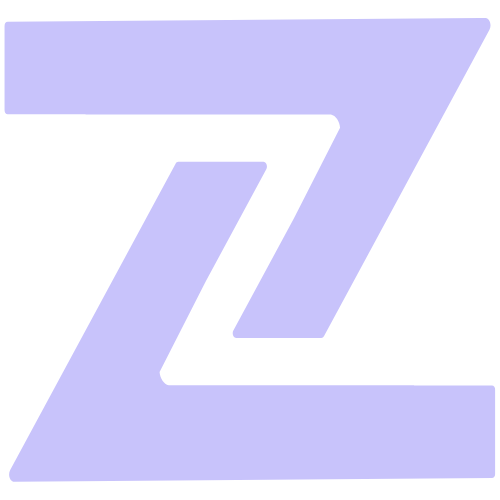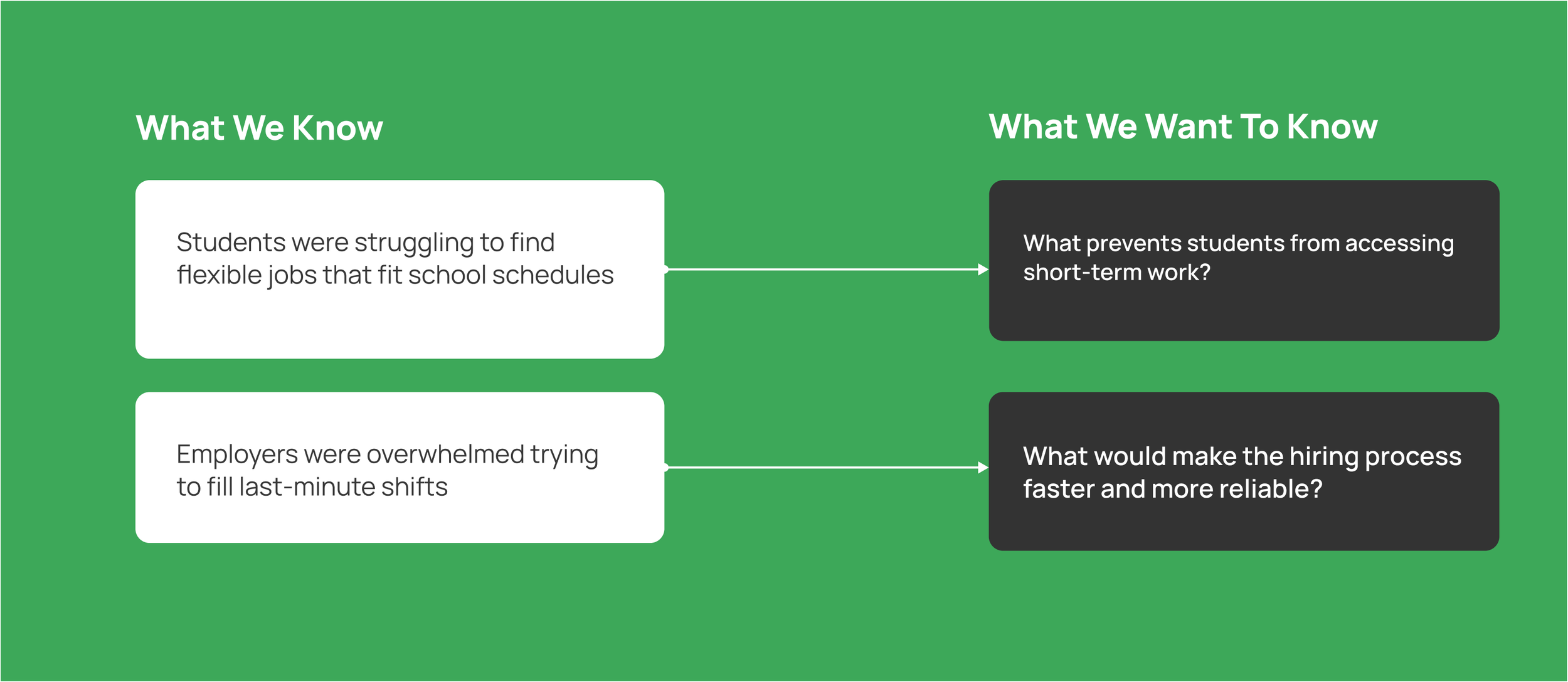GIG N GO
Key Concept
GIG N GO is a mobile app connecting college students to local restaurant jobs, helping students earn on their schedule while supporting small restaurants with fast, flexible staffing.
As a UX/UI Design intern, I led the design of a mobile solution for Genius Plaza, a multicultural education company expanding into social impact tools. Our team was tasked with exploring how tech could address post-COVID job instability for both students and small businesses. I collaborated within a small intern pod of 3 and worked cross-functionally with product managers and engineers. My challenge was designing for two distinct users under time constraints: students with inconsistent schedules and restaurant owners facing real-time staffing shortages.
Intro to GIG N GO
June - July 2021
UX Design Intern
Mobile App
Genius Plaza
The Opportunity
The mobile app makes it easy for students to browse and apply for local restaurant jobs based on availability and location.
We noticed something big: students weren’t finding jobs that fit their class schedules, and restaurant owners didn’t have time to sift through resumes. Both sides needed a better way.
Our goal was to create an experience that felt immediate and trustworthy, with features that made job searching feel as fast as ordering food.
Employers can post gigs, track applications, and pay workers directly through the platform. No repetitive paperwork or long hiring processes are needed with collaboration with Genius Plaza.
Research
Research Goals
I. Scheduling Gaps
84% of students had trouble finding jobs that matched their inconsistent availability
Personas
Two user personas created from research
My team focused on qualitative research and interviewed students (ages 18-24), small restaurant owners, and job recruiters to understand their pain points.
“I don’t have time to apply for 5 jobs just to get one shift.”
- 2nd Year College student
II. Hiring Friction
77% of employers said hiring was too slow sometimes for short-term needs
Key Themes
“Sometimes we may need someone tonight, not next week.”
- Small business owner
This helped us frame the challenge. Therefore we followed one question to give foundation to our project:
How Might We help students quickly find flexible jobs while giving employers confidence in hiring fast?
Designing for Two Worlds
Because this app served two very different users, my team mapped out both perspectives early on.
User flow for jobseeker
User flow for finding and using the app
Sketches & Brainstorming
Wireframing
Wireframing for jobseeker
To bring the concept to life, we created low-fidelity wireframes to map out the core user flows. These wireframes focused on key interactions, such as scheduling availability, viewing job listings on the map, and tracking earnings.
Wireframing for employer
Refinement & Usability Testing
Old job discovery designs
Updated design after usabilty testing
Improved application process after feedback from second round testings
Product MVP’s
Job Seeker
Map-Based Job Search
Job seekers can find nearby jobs by pay, distance, and position to find the best match fast.
Employer
Verify Gigworker
View key applicant info and verify credentials to quickly accept or decline candidates.
Application Process
Users can quickly apply for jobs directly through the app by submitting resumes and work experience in a few simple steps.
Application Review
Employers can easily browse and manage incoming applications for posted roles.
Earnings Tracker
Job seekers can track income, expenses, and gig-related deductions in one place.
Job Posting
Create gig listings with key details like role, location, pay, and shift availability.
Outcome & Reflection
Though Genius Plaza went out of business shortly after my internship, Gig N Go helped clarify how design could bridge gaps in underserved communities. Students said the app made it easier to quickly find nearby jobs that worked around their classes. Employers appreciated the ability to review applicants faster and avoid staffing gaps. This project taught me the value of listening to user urgency and how design can respond with purpose and speed.
Designing for two audiences - Learned to balance student and employer needs.
Sketching fast, testing often - Turned ideas into quick sketches and got early feedback.
Letting feedback lead - Refined my work based on what real users said.
Team collaboration practice - Worked closely with PMs and devs to align research with the product.
What I Learned
Impact
Reflection
As my first UX project coming in as a freshman in college, this experience laid the foundation for my approach to research and usability. While I was still growing in visual design, I quickly learned how to turn user pain points into focused, real-world solutions, especially under time and resource constraints.
Admit AI
HNGR
Mobile & Web, Product design, design systems
Mobile, UX/UI











